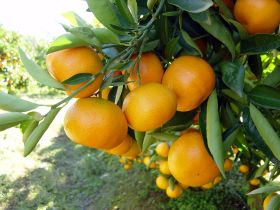
The FPJ Big 50 Products ranks the 50 best-selling fresh fruit and vegetable products by sales value, using Kantar Worldpanel data for the 52 w/e 21 May 2017.
6. Old potatoes

A new angle for potatoes
Value: £497.6m (-8.9%) Volume: 773.2m kg (-4.2%)
Potatoes have had a rough ride of late, with consumers spoilt for choice from rival carbs, reluctant to put in the time to prepare and cook spuds and generally watching their diets.
Nevertheless, potatoes continue to hold a two-thirds share of the carbohydrate market and there are concerted industry moves underway to get the public to think differently.
The main volume declines in maincrop sales have been among the over-45s, according to AHDB Potatoes, but there has been strong 21.9 per cent growth in the smaller under-28 age group, suggesting a rosier future. The AHDB’s ‘Potatoes: More Than a Bit on the Side’ campaign has targeted women in the 25-44 bracket to reinforce the message that potatoes are both healthy and easy to prepare. Consumers in that age group are lighter users of potatoes than empty nesters and retirees, representing greater potential to influence buying habits, the levy body believes.
“Encouraging people to consume potatoes at an early age futureproofs the industry, as they will be consumers for a number of years to come,” explains AHDB’s Rob Clayton. “Different nuances in messaging, particularly around healthy eating, which has more resonance with this audience than the older ‘everything in moderation’ age group, will demonstrate the relevance of potatoes in a healthy diet.”
7. Easy peelers

Easy pickings for easy peelers
Easy peelers continue to reign supreme in the citrus category, with sales driven by the overall convenience of the product.
In addition, improved eating quality, particularly in late season mandarins, has increased volume sales of newer varieties such as Orri, Tangold and Nadorcott, according to Matt Warren of AMT Fruit. Stuart Ansell of MMG Citrus seconds this, saying: “Nadorcott is the machine that runs over everything else in the citrus category at the moment.”
Once again volumes have outstripped value sales in easy peelers, reflecting continued price competition between retailers and the fact that easy peelers tend to be subject to more promotions than other citrus products. This price deflation has encouraged consumers to buy easy peelers more frequently and in greater volumes per trip, says Jo Mumford of Chingford Fruit. But supply has been difficult, with torrential rain in Spain in December creating challenges at a crucial time in the Christmas supply period.
Looking to capitalise on Britain’s healthy market for easy peelers, Chile is carrying out its first-ever citrus promotion in the UK this year as it looks to diversify its export markets. The pilot programme will focus on easy peelers and is aimed at the children’s segment of the market.
8. Mushrooms

Brexit clouds mushroom growth
Things look reasonably positive on the face of it for the mushroom trade – sales are in growth, the product is healthy, versatile and on-trend, and consumers are buying more frequently.
But behind the scenes, the mood isn’t quite so upbeat. A number of Irish mushroom farms supplying the UK have already gone bust as a direct result of the collapse of sterling following the Brexit referendum, and many others are reportedly struggling.
The growth of the discounters and the competition they have brought to the UK market has kept a lid on prices, but with the majority of mushrooms imported to this country, combined with domestic pressure from the National Living Wage and the spectre of labour shortages, it’s doubtful how long that can last.
There are some reasons for optimism though. “Volume is up per shopper, and purchase frequency is also up,” says Paul Parmenter, senior commercial manager at Walsh Mushrooms. “It’s a very versatile product and doesn’t have massive seasonal variations, and it gets consistent sales and works in breakfast, lunch and dinner.”
There’s also been some growth in sales of exotic mushrooms, while Monaghan’s vitamin D mushrooms were a hit in Tesco. But much will depend on how the market copes with Brexit.
9. Blueberries

Juicy sales growth for blues
With volume sales only increasing by one per cent on last year, compared to a 29 per cent rise the year before, most of the recent growth in blueberry revenues has been driven by retail price hikes.
Soft-fruit prices have been gradually rising across the board, with external factors such as the National Living Wage and currency volatility contributing to retail price rises. And with M&S, Tesco and Aldi all adding top-tier product to their range, category value has moved up.
In addition, blueberries have benefited from an increase in penetration and frequency of purchase, according to BerryWorld’s Charlotte Knowles. And the number of usage occasions is expanding – in products such as smoothies, juices, baked goods and as a cereal or yoghurt topper.
Sales growth has also been aided by successful PR campaigns focusing on the product’s health benefits, reports David Buxcey of Angus Soft Fruits, and the trend for healthy snacking has been supported by a campaign by Berry Gardens to switch berries for biscuits in the work place. “The other major factor is source development,” Buxcey says, with new sources such as Peru, South Africa, Portugal and Morocco providing more consistent quality and improving availability across the shoulders of the season.
10. New potatoes

New hope for new potatoes
New potatoes, much like their old counterparts, have suffered with the challenge of getting consumers to buy in, but volume sales are largely holding up and there is hope that things are on the up.
Leon Mundey, marketing director at Greenvale, points out that retailers have largely moved to everyday low pricing on new potatoes, which has helped with growth, but adds that further progress will come through category optimisation, new product development and consumer communication.
That PR effort will be key, and demonstrating that potatoes are healthy, versatile and easy to prepare is at the heart of current industry marketing initiatives. “Younger consumers have grown up with a greater choice of processed alternatives as well as a more diverse choice of foods based on globalisation of the market and are more likely to eat across a wide range of foods or opt for what they perceive to be more convenient options,” says Rob Clayton, strategy director for potatoes at AHDB. “This is reflected in an uplift in chilled and convenience products, so there may be further opportunities for innovation within this category.”
Albert Bartlett’s investment in the frozen potato sector shows suppliers are thinking outside the box, and that could be the key in the long-term evolution of the category.



